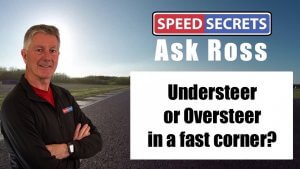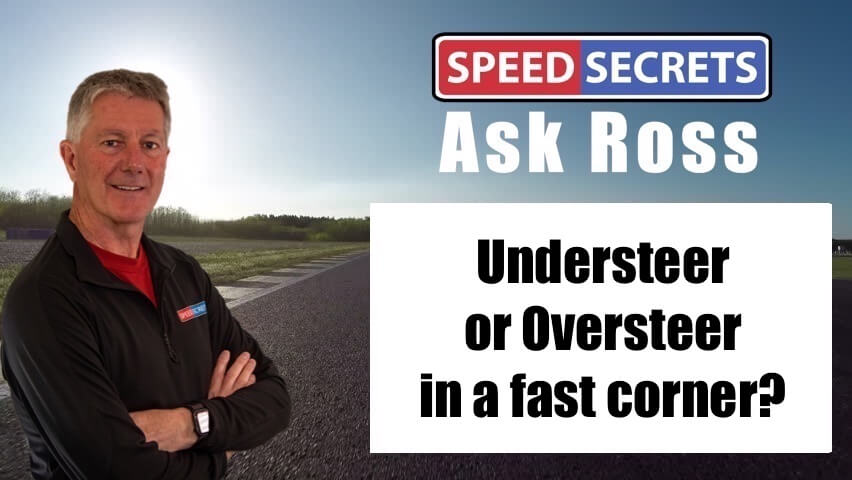
Q: “If I can adjust it at all when clearly going too fast, what’s the optimum to aim for – front slip or rear slip, what’s best to recover from?”
A: First, just so I’m clear, you’re asking whether you’d rather have understeer (front slip) or oversteer (rear slip), right? Certainly, driver preference is a factor, but most top-level drivers would prefer to have oversteer in slow corners, and understeer in fast corners. Why?
Oversteer can help you rotate or change the direction of the car, which is what you need most in tight, slow corners. And even though oversteer is usually a bit harder to correct for, because you’re in a slower corner, you have time to do that. In fast corners, though, the change in direction from oversteer is hard to control, and that’s why most drivers would prefer some understeer.
Let’s use Indy cars and Indy car drivers as an example, because they race on tight street circuits with slow corners, as well as super-speedway ovals. Practically every Indy car driver wants a touch of oversteer in tight, slow corners (such as on the Long Beach street circuit) to help get the car turned and pointed so they can get on the throttle early. They can modulate the throttle to manage the amount of oversteer coming off the corner. But when they get to the Indianapolis Motor Speedway, for example, the last thing a driver wants is to be trying to catch the rear of the car – oversteer – at over 200 MPH. They’d rather have a bit of understeer, which is most easily managed with subtle steering and throttle adjustments.
Obviously, those are far ends of the speed spectrum, from very slow to very fast corners. But the same principles apply when the speed differences are not so extreme.
Another way to think about this: rather than making it about speed, make it about corner radius. The priority in tight radius corners is getting the car to change direction enough, and a touch of oversteer will help with that. The priority in larger radius corners is keeping the speed up – and there’s less need for a drastic change in direction – so an easier-to-manage handling characteristic – understeer – is most helpful.
If you can tune your car’s handling so that it oversteers in slow corners, and understeers in fast corners, great. If your car has some aerodynamic downforce, that’s easier than if the car doesn’t have any aero. Still, it is possible to tune your car’s setup to have both of these traits.
If you can tune your car to suit the corner radii and speeds, then a perfectly-balanced car is what you want – maybe just a tiny hint of understeer – and you can deliberately cause some oversteer in slow/tight corners with your driving. In that case, it would be through the timing and rate of release of the brake pedal. In other words, how much or how little you trail brake into those slow/tight corners.
Finally, you might be wondering what to do with those corners that aren’t slow/tight ones, or fast/flowing turns. In those medium speed corners, you have to adapt your driving to suit the amount you want to change your car’s direction – the amount of rotation. It’s all about making the right compromise.
If you deliberately practice adapting to the way your car handles, and how to make the car understeer or oversteer, you’ll be better prepared for whatever your car and the track throw at you.

